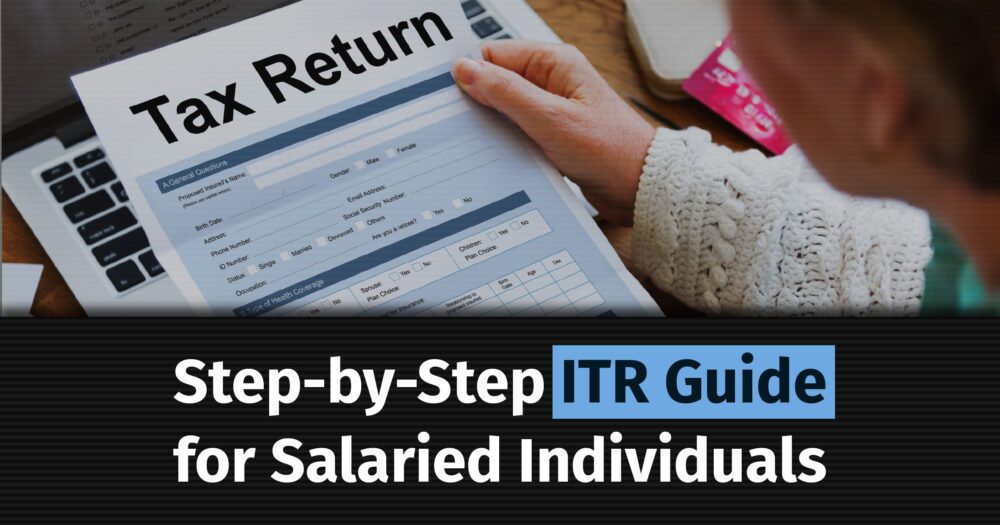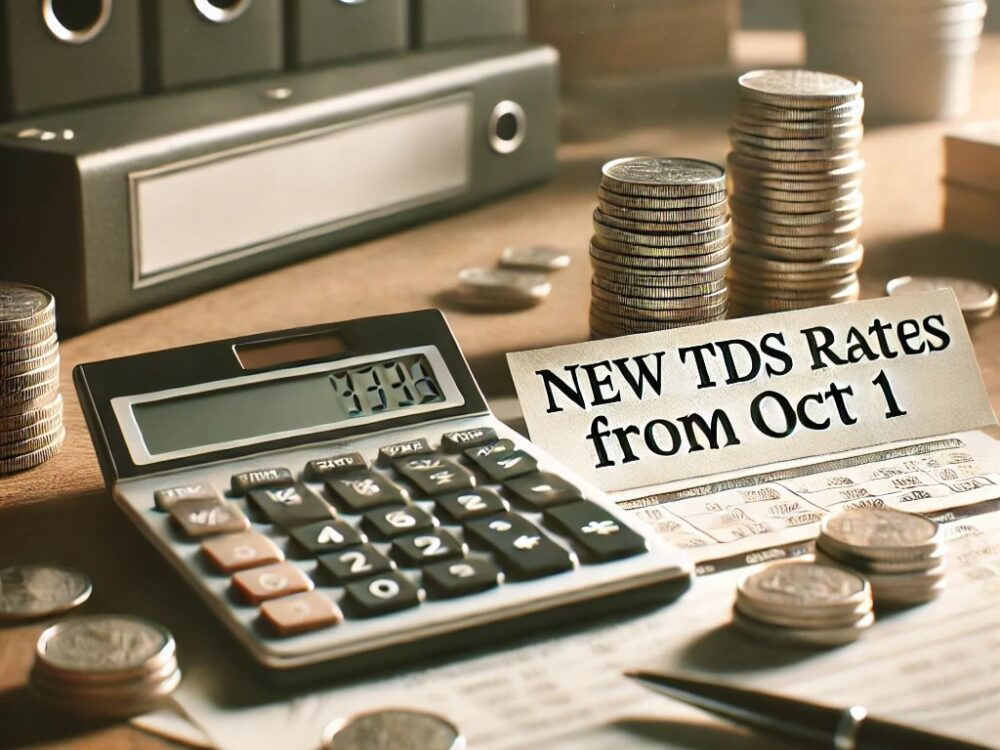As if a tedious 9 to 5 taking a toll on you wasn’t enough, now you also have to deal with filing your own taxes and having to sit through a process of evaluating your finances. But what if you could break down the filing process into simple steps and could actually get it done in minutes?
Well, it is really possible now with the government’s e-filing portal. While the process may seem complicated, understanding the steps and requirements makes it much simpler. Let us go through a quick rundown of what it looks like to file ITR for salaried employees.
Documents Required for Filing ITR for Salaried Employees
Before starting the ITR filing process, gather all the necessary documents to ensure the information you provide is accurate and up-to-date. Here’s a list of the key documents needed:
- PAN Card
- Aadhaar Card
- Form 16 and 26A
- Bank Statements and Proof of Investments
- House Rent Receipts and/or Home Loan Interest Documents
- Investment proofs (for deductions under Section 80C, 80D, etc.)
Step-by-step Process to File ITR for Salaried Employees
Step 1: Select the correct ITR form
This is a tricky part of the process as selecting the wrong form can have you go through the hassle of filing a revised return and delayed or cancelled refunds. Now, most salaried employees use ITR-1. However, be doubly sure of your eligibility criteria in this regard as if you have additional income sources, such as rental income or gains from the sale of assets, then you may need to file ITR-2.
Step 2: Register/login to the Income Tax e-filing portal
Now, go to the Income Tax e-filing portal and log in using your PAN number and password. If you are a first-time taxpayer, then you will need to register on the portal with all relevant information and then attempt a login.
Step 3: Download and review form 26AS
Once in, download Form 26AS from the portal. Match the TDS mentioned in Form 16 with the figures in Form 26AS. In case the figures don’t match, you might need to review your application.
Step 4: Enter salary details
Now, refer to Form 16 provided by your employer to provide accurate information about your salary. After this, make sure you have correctly calculated and filled in your gross salary, as well as details of exemptions, like HRA, LTA and standard deduction.
Once that is done, add details of any additional income, such as interest from savings accounts or fixed deposits.
Step 5: Claim deductions
As you are aware, salaried employees can claim various deductions to reduce taxable income. Here are some of the most common ones:
- Section 80C: You can claim deductions of up to ₹1.5 lakhs for contributions to PPF, ELSS mutual funds, LIC premiums, home loan principal repayments and more.
- Section 80D: Deduction on health insurance premiums, with a limit of ₹25,000 for self, spouse and children, and ₹50,000 for senior citizen parents.
- Section 24(b): For home loan interest payments, you can claim a deduction of up to ₹2 lakhs on interest paid annually.
- Section 80E: Interest paid on education loans is fully deductible.
To claim these deductions, you will need your bank statements and PAN card information handy. Make sure that you have a valid proof for all the deductions claimed, as these will be required if your return is scrutinized. Falsifying any information in this regard can have severe legal consequences.
Step 6: Verify your tax liability
After filling in all your income and deduction details, calculate your tax liability. The ITR form automatically calculates this for you, but it is always a good idea to cross-check. If you’ve paid more tax than required, then the system will generate a refund. However, if you owe additional taxes, then you will need to pay the balance through the e-payment feature on the portal.
Step 7: Submit the ITR request
After reviewing the form, you can submit your ITR electronically. You have two options:
- Online Mode: For simple returns, you can file directly on the portal using the ‘Prepare and Submit Online’ option.
- Offline Mode: For more complicated cases, you can download the ITR form, fill it offline and then upload the XML file to the portal.
Step 8: E-verification
Once submitted, your ITR needs to be verified. This can be done electronically using Aadhar OTP, net banking or Electronic Verification Code (EVC). Of all these methods, EVC is the fastest and the safest. However, in case you are unable to verify your return request online, you can do it offline by sending a signed copy of the acknowledgement marked as ITR-V to the CPC in Bengaluru.
ITR Forms for Salaried Individuals (AY 2024-25)
To help you navigate this process better, here is a list of ITR forms that you need to choose from if you are looking to file your return as a salaried employee.
| Form | Applicability | Sources of Income | Not Applicable If | Notes |
| ITR-1 (SAHAJ) | Resident Individual (up to ₹50 lakh income) | Salary/Pension, One House Property, Other Sources, Agricultural Income (up to ₹5,000) | Director in a company, Unlisted equity shares, Income/assets outside India, Tax deducted u/s 194N, Deferred ESOP tax, Losses carried forward, Income above ₹50 lakh | Simplified form |
| ITR-2 | Individual and HUF | Income other than Business/Profession | – | Cannot file ITR-1 |
| ITR-3 | Individual and HUF | Income from Business/Profession | – | Cannot file ITR-1, ITR-2 or ITR-4 |
| ITR-4 (SUGAM) | Individual, HUF, Firm (up to ₹50 lakh income) | Business/Profession (presumptive basis), Salary/Pension, One House Property, Other Sources, Agricultural Income (up to ₹5,000) | Director in a company, Unlisted Equity Shares, Assets Outside India, Deferred ESOP Tax, Losses Carried Forward, Income above ₹50 lakh | Simplified form, optional |
Forms and Certificates
Now, after you have taken note of all the downloadable forms, here is a list of forms that you need to produce while filing your ITR.
| Form | Provided by | Purpose |
| Form 12BB | Employee to Employer | Deduction of tax claims for HRA, LTC, home loan, tax savings |
| Form 16 | Employer to Employee | Tax deducted at source (TDS) for salary |
| Form 16A | Deductor to Deductee | TDS for non-salary income |
| Form 26AS | Income Tax Dept. | Summary of taxes paid, refunds, TDS |
| Form 10E | Employee to IT Dept. | Claim relief for salary paid in arrears or advance |
| AIS (Annual Info Statement) | Income Tax Dept. | Tax info, transactions, pending proceedings, foreign government info |
wrapping Up
Filing your ITR as a salaried employee is a cakewalk if you follow the above steps correctly. Just a heads up, try not to miss the July 31st deadline because although you have the






